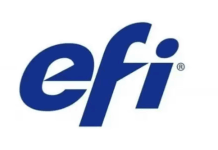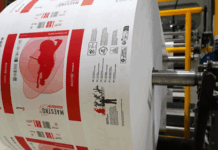Vaughan Patterson, Strategic Business Development Manager, Graphic Communications Group, Ricoh South Africa, elaborates on making your workflow work with cloud-driven automation. The print industry is at a critical turning point. speed has become a defining factor, with the drupa Print Horizons Report revealing that nearly half (48%) of commercial printers now complete more than 25% of their digital print orders in under 48 hours.
Yet, most operations aren’t equipped to keep pace. Just 54% of print providers have automated prepress systems, only 35% have press and post-press automation, and a mere 13% are running fully integrated end-to-end JDF workflows. Ricoh’s own research, The Automation Gap, highlights that while nearly 80% of businesses understand the need for automation to boost efficiency, more than half (52%) still rely on outdated manual processes.
That gap presents a major opportunity. Now is the time for Print Service Providers (PSPs) to invest in automation to stay competitive. Cloud-based automation has become the new standard, and for good reason. It is scalable, flexible and quick to deploy. It starts with the client and offers a simple, seamless digital job submission process that automatically feeds into the workflow – moving jobs from onboarding to prepress and into the production queue without manual intervention.
But beyond pure speed, automation is helping PSPs tackle three major industry challenges:
Skills Shortages
Many providers are facing a shortage of experienced staff, which often results in production delays and missed opportunities. By automating key stages – from job submission through to final output – PSPs can reduce reliance on manual labour, accelerate turnaround times and free up resources to focus on higher-value work.
Rising Client Expectations
Clients today expect more: faster service, personalisation, quality and sustainability. With online portals for 24/7 job submission and automated status updates, PSPs can meet those expectations. Tools like automated colour management and variable data printing add further value. Meanwhile, print-on-demand workflows help minimise waste and lower transport and storage costs, supporting both environmental and cost goals.
Tightening Margins
In a price-sensitive market, protecting margins is vital. Automation helps cut unnecessary steps and manual tasks that slow down production and drive up costs. By doing more with less, businesses can stay lean, efficient and financially resilient.
Mind The Gap: Meeting The Automation Demand
Despite the clear advantages, end-to-end automation is still underused. Drupa reports that while 38% of printers see automation as a priority, only 22% of suppliers are adequately responding to that need.
As the industry shifts from a hardware-first to a software-first mindset, the emphasis is on smarter workflows. An online client portal becomes the gateway: customers can upload jobs at any time, triggering a series of automated processes including job ticketing, pre-flighting, imposition and substrate selection. By removing multiple manual touchpoints, print-ready files are delivered straight to the queue, shaving hours, even days, off of production schedules.





















